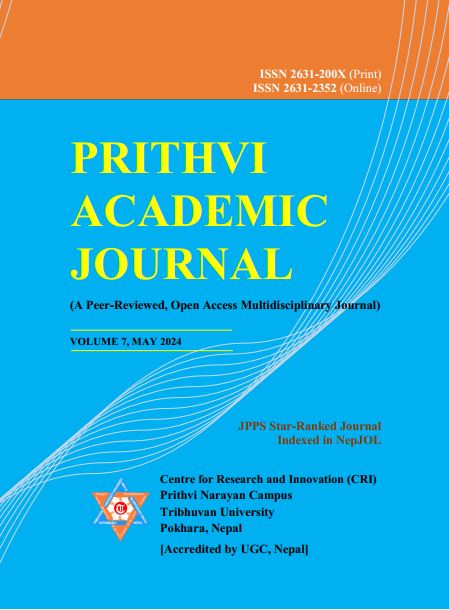Midday Meal Programs in Institutional and Community Schools of Nepal: A Comparative Analysis of Students’ Meal Choices
DOI:
https://doi.org/10.3126/paj.v7i1.65766Keywords:
Institutional schools, community schools, midday meals, quality educationAbstract
Midday meals play a crucial role in satisfying and motivating students during teaching-learning activities, ensuring that they receive their basic education rights. As food and nutrition are fundamental for every living being, and since students spend a significant portion of their day in school, they require snacks to sustain their energy levels. The study aimed to recognize modalities related to parents' education and evaluate school physical facilities associated with midday meals in institutional and community schools. The research, conducted with the participation of school principals and fifth-grade students, revealed significant disparities in providing midday meals and the quality of school facilities. The study employed an explanatory sequential design. Ten headteachers and 240 students were the samples for this research. The interview schedule and observing rating scale were used as data collection tools. The study explored how parents' education levels influence their choices regarding where to enroll their children. It also discovered that parents with lower qualifications prefer community schools, while those with graduate qualifications lean towards institutional schools. Additionally, snack consumption habits differ between institutional and community schools, reflecting potential socio-economic influences. It was found that over half of students in institutional schools brought homemade lunches, while community schools offered meals in canteens. The findings underscore the need for targeted interventions to enhance school facilities, particularly addressing identified shortcomings to ensure the well-being and safety of students participating in the midday meal program.





